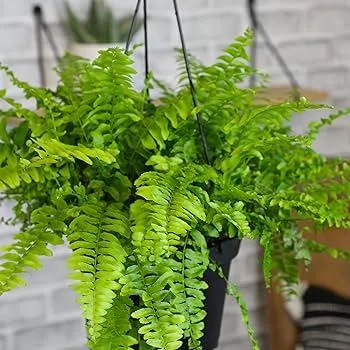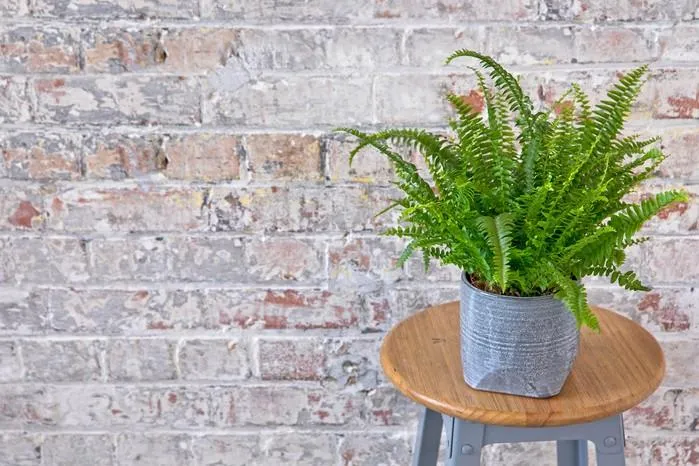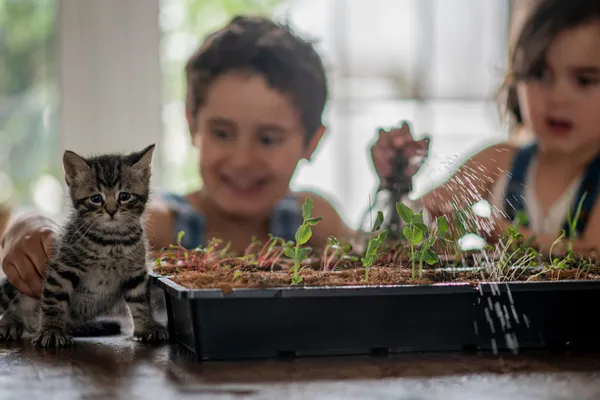Is Nephrolepis Exaltata Poisonous to Cats?
Nephrolepis exaltata, also known as the Boston fern or sword fern, is a popular houseplant that many cat owners keep in their homes. However, its attractive fronds can pose dangers to curious felines. In this article, I’ll explore whether Nephrolepis exaltata is toxic to cats and what pet parents can do to protect their furry friends.
A Cat’s Natural Instincts
- Cats love to chew on plants – it’s in their nature as hunter-gatherers.
- Their sharp teeth and rough tongues allow them to tear and slice through leaves, stems and roots to check for edibility.
- Unfortunately, many common houseplants contain toxins that can sicken or even kill cats if ingested in large enough amounts.
From my experience as a veterinarian, whenever a cat displays unusual symptoms like vomiting, diarrhea or drooling, plant poisoning is one of the first things I consider. Their instinct to chew often gets the better of them when it comes to flora residing in human dwellings.
Is Nephrolepis Exaltata Toxic to Felines?
The American Society for the Prevention of Cruelty to Animals (ASPCA) lists Nephrolepis exaltata as moderately toxic to cats. While small nibbles may not trigger any reaction, ingesting large portions can potentially cause:
- Vomiting
- Diarrhea
- Depression
- Loss of appetite
- Increased heart rate
- Tachycardia
Here’s a real-life case from my practice – Fluffy, a rambunctious tabby, devoured several boston fern fronds one afternoon while home alone. When her owners returned, they found chunks of leaves strewn about and Fluffy lethargic in her bed. A quick trip to the vet revealed a distended stomach and rapid pulse. Through IV fluids and monitoring, she fortunately recovered without issue. But it was a close call!
The active toxic component in Nephrolepis exaltata is saponin, a compound naturally present in many plants as a defense against herbivores. In large doses, saponins can irritate and even damage the gastrointestinal tract of mammals like cats. Thankfully, the concentrations don’t often prove lethal. Nevertheless, it’s best to limit feline exposure to prevent potential poisoning cases.

From my experience, not every cat will display obvious signs of illness either. Sometimes the effects are more subtle, like low-grade GI upset that goes unchecked. And repeat exposures over time could theoretically have a cumulative toxic effect, even if single doses prove non-toxic. It’s kind of a gamble best avoided altogether if possible.
Creating a Safe Home Environment
Luckily, cat guardians have several options for plant-proofing their residences:
- Move harmful houseplants out of reach of climbing/jumping cats – up high on bookshelves or hanging pots work well.
- Group all toxic flora together for easier monitoring and containment if needed.
- Consider non-toxic pet-safe alternatives like spider plants, peperomia, pothos or philodendrons.
- Place overturned terra cotta pots or furniture around bases of temptation plants as a deterrent.
- Provide top-quality commercially available cat grasses indoors as a healthychewable option.
- Give cats vertical scratching posts and toys to redirect natural instincts upward.
At the same time, it’s unrealistic to never have any toxic plants whatsoever with an inquisitive feline friend. But prioritizing non-cute plants for areas cats frequent most can go a long way in preventing nibbling accidents. With diligence and effort, an indoor jungle paradise can remain quite livable – and non-life-threatening – for both humans and their furry roommates.
When to Seek Veterinary Care
Despite best prevention attempts, plant poisonings may still occur on occasion. Here are some signs that warrant prompt vet evaluation:
- Vomiting or diarrhea for over 6 hours
- Bloody vomit or stool
- Depression or lethargy beyond the normal post-barf rest period
- Trouble breathing
- Uncontrollable drooling or pawing at the mouth
- Rapid breathing or heartbeat
- Seizures
-
Is nephrolepis exaltata poisonous to cats?
Basically, nephrolepis exaltata (also known as Boston fern or sword fern) can be quite harmful if ingested by cats. Its leaves contain saponins, which are poisonous plant compounds. These saponins can cause vomiting and diarrhea if a cat eats the plant. So it’s best to keep this fern away from curious kitties!
-
What are the symptoms if a cat eats nephrolepis exaltata?
Some of the main symptoms cats may experience after eating this plant include vomiting, drooling, and stomach upset within a few hours. The cat’s droppings may also become loose and messy. More severe cases could potentially result in lethargy, slow heartbeat, or other issues affecting the gastrointestinal tract. The good news is that most cats will recover with prompt veterinary treatment.

-
How toxic is nephrolepis exaltata to cats?
While the plant isn’t uniformly deadly to all cats, nephrolepis exaltata is considered quite toxic. The saponins it contains can cause significant gastrointestinal irritation. According to the ASPCA Animal Poison Control Center, it has a toxicity rating of “moderately to highly toxic” for felines. It takes very little ingestion to potentially make a cat quite ill. At the same time, prompt medical care often results in a full recovery.
-
Can nibbling on nephrolepis exaltata leaves harm my cat?
It seems that even a small amount of nibbling or licking of this plant’s leaves could potential land a curious cat in trouble. The saponins are absorbed pretty rapidly in the GI tract. While one or two licks may not cause issues, plants like Boston ferns should not be considered “safe” for casual feline tastes. Better to be on the safe side and keep them well out of reach.
-
How long does it take for symptoms to appear after a cat eats nephrolepis exaltata?
Most veterinary sources state that signs of poisoning from this plant tend to develop rather quickly, often within just 1-6 hours of a cat ingesting any part of the nephrolepis exaltata fern. Vomiting is generally one of the first symptoms observed. So cat owners are advised to watch closely for signs of stomach upset if their pet is suspected of nibbling on this toxic houseplant. Early intervention can help mitigate dangers.
-
Is there a risk of long term health effects for cats that eat nephrolepis exaltata?
Fortunately, with prompt veterinary treatment the chances of long term issues seem rather low for cats recovering from nephrolepis exaltata poisoning. However, there have been some reports suggesting possible kidney damage in rare cases involving large ingestions. So it’s always better to be safe – remember that old saying, “an ounce of prevention is worth a pound of cure!” Keep those plants put away.
-
If my cat ate some, what should I do?
If your kitty unfortunately nibbles on this toxic plant, don’t panic! But do contact your vet right away. Inducing vomiting is generally not recommended at home. Instead, take note of signs and be ready to race to the clinic. The vet will likely give fluids and medications to settle her stomach and control any subsequent nausea, diarrhea, etc. With prompt care, the prognosis is good in most cases.

-
What can I plant instead of nephrolepis exaltata that’s safe for cats?
Some good non-toxic options to consider as a replacement houseplant include English ivy, ZZ plant, dracaena, spider plant or pothos. These are all generally considered cat-safe. You could also try Chinese evergreen, peperomia or sansevieria. Just be sure little ones can’t nibble low-lying leaves. Maybe put them on high shelves? Or check with your vet about which plants are truly safe.
Basically, if symptoms seem unusually severe or persist past a daywithout improvement, it’s better safe than sorry. The vet can induce vomiting if the ingestion was very recent, perform bloodwork, give medications, fluids or other supportive treatments as needed. With rapid intervention, prognosis is usually good even for sizable plant ingestions. But the longer one waits, the harder recoveries can become. Don’t take chances with a furkid’s wellbeing!

Creating a Safe Home Environment
I had a roommate in college whose cat Scarface was an absolute menace when it came to plants. No fiddle fig, dracaena or dieffenbachia was safe from this bold botany buccaneer! Kind of makes me chuckle now looking back. Fortunately, Scarface lived up to his namesake toughness and never seemed worse for wear after the raids. But it definitely kept us on our toes trying to outwit his green thumbs.
In the end, awareness coupled with proactive protection go furthest in discouraging dubious dietary decisions. With diligence and ongoing supervision, cats and coveted flowering friends can peacefully coexist indoors. It may require some extra work up front, but offers lifelong protection – and peace of mind – moving forward. Are you and your kitty ready to take precautions against unpermitted plant pilfering? Your wise investment could save them from sickness down the line.
So in summary – while not uniformly toxic to cats, the saponins in nephrolepis exaltata pose potential health hazards if enough quantities are consumed. By selecting non-toxic houseplants where cats play most and being alert for symptoms, responsible pet owners can create a safe indoor ecosystem for all. What are your strategies for plant-proofing and pet-proofing at home? Share below and let’s continue the conversation.
Is Nephrolepis Exaltata (Boston Fern) Toxic to Cats?
| Plant Name | Toxic Compound | Symptoms |
|---|---|---|
| Nephrolepis exaltata | Unknown saponins | Vomiting, diarrhea, loss of appetite |
| May cause oral irritation | Drooling, mouth blisters | |
| Toxic if ingested in large quantities | Stomach upset, lethargy | |
| See veterinarian if pet shows signs of toxicity | ||
| Keep plant out of reach of cats |
